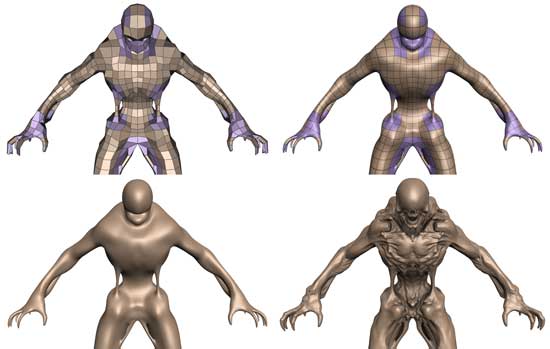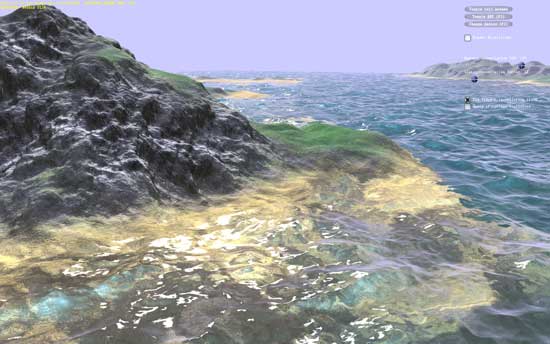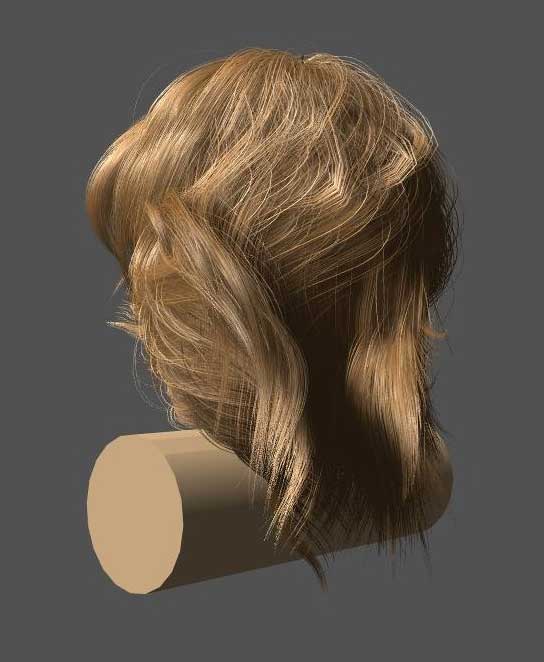Why NVIDIA Is Focused On Geometry
Up until now we haven’t talked a great deal about the performance of GF100, and to some extent we still can’t. We don’t know the final clock speeds of the shipping cards, so we don’t know exactly what the card will be like. But what we can talk about is why NVIDIA made the decisions they did: why they went for the parallel PolyMorph and Raster Engines.
The DX11 specification doesn’t leave NVIDIA with a ton of room to add new features. Without the capsbits, NVIDIA can’t put new features on their hardware and easily expose them, nor would they want to at risk of having those features (and hence die space) go unused. DX11 rigidly says what features a compliant video card should offer, and leaves you very little room to deviate.
So NVIDIA has taken a bit of a gamble. There’s no single wonder-feature in the hardware that immediately makes it stand out from AMD’s hardware – NVIDIA has post-rendering features such as 3D Vision or compute features such as PhysX, but when it comes to rendering they can only do what AMD does.
But the DX11 specification doesn’t say how quickly you have to do it.

Tessellation in action
To differentiate themselves from AMD, NVIDIA is taking the tessellator and driving it for all its worth. While AMD merely has a tessellator, NVIDIA is counting on the tessellator in their PolyMorph Engine to give them a noticeable graphical advantage over AMD.
To put things in perspective, between NV30 (GeForce FX 5800) and GT200 (GeForce GTX 280), the geometry performance of NVIDIA’s hardware only increases roughly 3x in performance. Meanwhile the shader performance of their cards increased by over 150x. Compared just to GT200, GF100 has 8x the geometry performance of GT200, and NVIDIA tells us this is something they have measured in their labs.
So why does NVIDIA want so much geometry performance? Because with tessellation, it allows them to take the same assets from the same games as AMD and generate something that will look better. With more geometry power, NVIDIA can use tessellation and displacement mapping to generate more complex characters, objects, and scenery than AMD can at the same level of performance. And this is why NVIDIA has 16 PolyMorph Engines and 4 Raster Engines, because they need a lot of hardware to generate and process that much geometry.
NVIDIA believes their strategy will work, and if geometry performance is as good as they say it is, then we can see why they feel this way. Game art is usually created at far higher levels of detail than what eventually ends up being shipped, and with tessellation there’s no reason why a tessellated and displacement mapped representation of that high quality art can’t come with the game. Developers can use tessellation to scale down to whatever the hardware can do, and in NVIDIA’s world they won’t have to scale it down very far to meet up with the GF100.
At this point tessellation is a message that’s much more for developers than it is consumers. As DX11 is required to take advantage of tessellation, only a few games exist while plenty more are on the way. NVIDIA needs to convince developers to ship their art with detailed enough displacement maps to match GF100’s capabilities, and while that isn’t too hard, it’s also not a walk in the park. To that extent they’re also extolling the other virtues of tessellation, such as the ability to do higher quality animations by only needing to animate the control points of a model, and letting tessellation take care of the rest. A lot of the success of the GF100 architecture is going to ride on how developers respond to this, so it’s going to be something worth keeping an eye on.

NVIDIA's water tessellation demo

NVIDIA's hair tessellation demo










115 Comments
View All Comments
Stas - Tuesday, January 19, 2010 - link
all that hype just sounds awful for nVidia. I hope they don't leave us for good. I like AMD but I like competition more :)SmCaudata - Monday, January 18, 2010 - link
The 50% larger die size will kill them. Even if the reports of lower yields are false they will have to get a much smaller profit margin on their cards than AMD to stay competetive. As it is the 5870 can run nearly any game on a 30" monitor with everything turned up at a playable rate. The target audience for anything more than a 5870 is absurdly small. If Nvidia does not release a mainstream card the only people that are going to buy this beast are the people that have been looking for a reason not to buy and AMD card all along.In the end I think Nvidia will loose even more market share this generation. Across the board AMD is the fastest card at every price point. That will not change and with the dual GPU card already out from ATI it will be a long time before Nvidia has the highest performing card because I doubt they will release a dual GPU card at launch if they are having thermal issues with a single GPU card.
BTW... I've only ever owned Nvidia cards but that will likely change at my next system build even after this "information."
Yojimbo - Monday, January 18, 2010 - link
what do you mean by "information"?SmCaudata - Monday, January 18, 2010 - link
Heh. Just that it was hyped up so much and we really didn't get much other than some architectural changes. I suppose that maybe this is really interesting to some, but I've seen a lot of hardware underperform early spec based guesses.The Anandtech article was great. The information revealed by Nvidia was just okay.
qwertymac93 - Monday, January 18, 2010 - link
I really hope fermi doesn't turn into "nvidias 2900xt". late, hot, and expensive. while i doubt it will be slow by any stretch of the imagination, i hope it isn't TOO hot and heavy to be feasible. i like amd, but nvidia failing is not good for anybody. higher prices(as we've seen) and slower advancements in technology hurt EVERYONE.alvin3486 - Monday, January 18, 2010 - link
Nvidia GF100 pulls 280W and is unmanufacturable , details it wont talk about publiclyswaaye - Monday, January 18, 2010 - link
Remember that they talked all about how wondrous NV30 was going to be too. This is marketing folks. They can have the most amazing eye popping theoretical paper specs in the universe, but if it can't be turned into something affordable and highly competitive, it simply doesn't matter.Put another way, they haven't been delaying it because it's so awesome the world isn't ready for it. Look deeper. :D
blowfish - Monday, January 18, 2010 - link
This was a great read, but it made my head hurt!I wonder how it will scale, since the bulk of the market is for more mainstream cards. (the article mentioned lesser derivatives having less polymorph engines)
Can't wait to see reviews of actual hardware.
Zool - Monday, January 18, 2010 - link
Iam still curious why is nvidia pushing this geometry so hard. With 850 Mhz the cypress should be able to make 850mil polygons/s with one triangel/clock speed. Now thats 14 mil per single frame max at 60fps which is quite unrealistic. Thats more than 7 triangels per single pixel in 1920*1050. Making that amount of geometry in single pixel is quite waste and also botlenecks performance. U just wont see the diference.Thats why amd/ati is pushing also adaptive tesselation which can reduce the tesselation level with copute shader lod to fit a reasonable amount of triangels per pixel.
I can push teselation factor to 14 in the dx9 ATI tesselation sdk demo and reach 100fps or put it on 3 and reach 700+ fps with almost zero difference.
Zool - Tuesday, January 19, 2010 - link
Also want to note that just tesselation is not enough and u always use displacement mapping too. Not to mention u change the whole rendering scene to more shader demanding(shadows,lightning) so to much tesselation (like in uniengine heaven on almost everything, when without tesselation even stairs are flat) can realy make big shader hit.If u compare the graphic quality before tesselation and after in uniengine heaven i would rather ask what the hell is taken away that much performance without tesselation as everything looks so flat like in a 10y old engine.
The increased geometry setup should bring litle to no performance advantage for gf100, the main fps push are the much more eficience shaders with new cache architecture and the more than double the shaders of course.